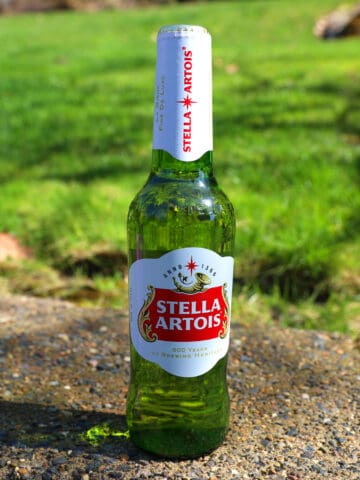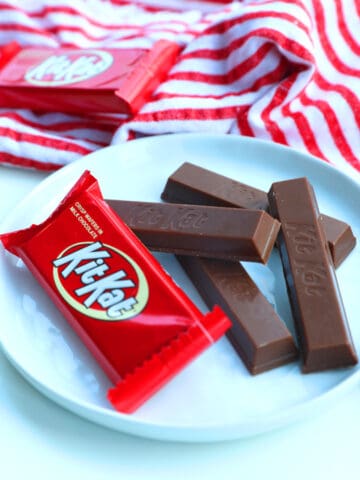They’re soft, spreadable cheese wedges that can go great in salads, sandwiches, and charcuterie boards — and they can make the perfect snacks. But is Laughing Cow cheese gluten free? Or should those on a gluten-free diet steer clear.

Laughing Cow cheese is made with real cheese and bills itself as a good source of calcium and vitamins A and D. And it’s sold in a variety of flavors, from Original to Creamy Garlic & Herb to Aged White Cheddar.
But what if you have Celiac disease, a gluten allergy, or are simply on a gluten-free diet? Can you still eat Laughing Cow cheese?
All types of Laughing Cow cheese are gluten free. That means they are compatible with a gluten-free diet and for those with gluten sensitivities.
But there are some other types of Laughing Cow products that do contain gluten. Keep reading to find out what those are, and to learn more about Laughing Cow cheese.
Jump to:
What is Laughing Cow cheese?

Laughing Cow cheese is a kind of semisoft, spreadable processed cheese that comes in round packages of wedges. The creamy cheese dates back to 1921, when businessman Leon Bel began making it in Lons, France. A few years later, he started using a logo of a laughing cow and began to produce his cheese in the shape of wedges wrapped in foil.
The cheese was first manufactured in the United States in Kentucky in 1975. Now there are 10 types of Laughing Cow cheese wedges, along with other products like dippable cheese that come with whole wheat breadsticks.
What is in Laughing Cow cheese?
Main ingredients in Laughing Cow cheese include cheddar and Swiss cheeses, whey, milk protein concentrate, pasteurized milk, part-skim milk, butter, and water.
Like most cheeses, Laughing Cow is gluten free as it does not contain the gluten protein found in grains like wheat and barley.
The cheese also contains no artificial flavors, artificial colors, or artificial preservatives. And it is fairly low in fat at only 45 calories per wedge.
In addition, the company says its cheese does not use milk with artificial growth hormones.
Are Laughing Cow & Go Dippable Cheese products gluten free?
While the cheese in Laughing Cow & Go products does not contain gluten, the wheat-based bread sticks that are included do, since they contain wheat flour. So if you’re unable to consume gluten, you should steer clear of the breadsticks in these products.
How long does Laughing Cow cheese last?
Packages of Laughing Cow spreadable cheese wedges come with an expiration date, so it’s best to consume before that date if unopened.
You should store the cheese in the refrigerator until you’re ready to eat it. Once you open a wedge of the cheese, it’s best to eat it as soon as possible as it can lose freshness and taste, and can dry out if left exposed to air.
Can you freeze Laughing Cow cheese?
Freezing any type of soft cheese should usually be avoided. That’s because the freezing process can affect the creamy texture of the cheese.
Soft cheese like Laughing Cow can have a high moisture content. Freezing it and then thawing it out releases that moisture from it. That can leave the inside of the cheese dry and the outside watery.

FAQ
Yes, all Laughing Cow cheese varieties are made with 100% cow’s milk.
The Laughing Cow original cheese contains 17% fat and 35 calories per triangle. Laughin Cow Light cheese has 8% fat and less than 25 calories.
Yes, Laughing Cow cheese products are pasteurized and adhere to the pasteurization requirements of the USDA and the FDA.
The bottom line
Laughing Cow semisoft cheese can be a great choice for snack time or as a complement to other dishes. And if you’re unable to have gluten, the good news is that Laughing Cow cheese is gluten free.
It’s also lacto-vegetarian, a good source of protein, and at 3.5 grams of fat per wedge, it’s also fairly low fat.
But since the Laughing Cow cheese dippers do contain gluten in the wheat breadsticks that are included, those with gluten sensitivities should avoid eating them.
More gluten-related food answers
Have questions about whether other foods or drinks are gluten free? Check out the posts below.






Leave a Reply